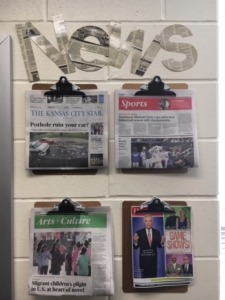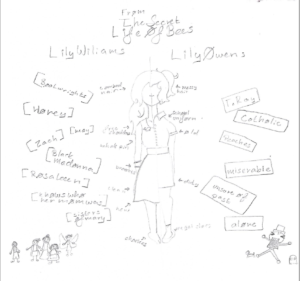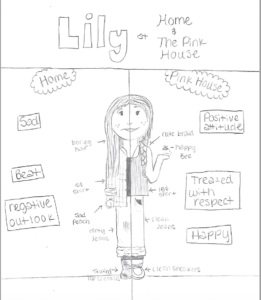Your child’s/children’s school district is closed. You have to figure out how to keep the learning going. Most teachers are putting in extra hours to provide resources, and they will work through the shutdowns to support their students and their students’ parents. But what if you need more?
There are so, so many resources available to parents online. I have compiled a list of some of my favorites so you can find them all in one place.
Before we get to the resources, here are a few things to think about.
Create a schedule.
Children need structure and boundaries to feel safe. Even teenagers. You will need to balance their work with yours, so think about ways to merge your peak times with their quiet work time. Then work with your child to create a schedule, and stick to it as much as possible.
- Younger students will need a balance of quiet work, activities, and free play time. Use this resource on normal attention spans to help you plan. Several sample schedules are available on social media and Pinterest, but the best schedule for you and your child will be the one you create together.
- Older students should create their own schedules. Just provide some non-negotiables and let them come up with a few options. Turn it into a lesson and let them present their first choice and reasons to you in a persuasive presentation!
- For students of all ages, brainstorm a list of what to do if they are stuck and you are unavailable. For example, they could write their questions on a post-it before moving on to a back-up activity or a next-on-the list task. Older students could have a network of friends to work with through a site like Flipgrid (see below) or Zoom.
Make sure younger children know what you mean when you say “emergency” so they’ll know when it’s necessary to interrupt you.
Build in incentives/rewards and social time.
We will all need some things to look forward to during these days of limited social contact. Part of planning the daily schedule should include a plan for incentives and rewards.
- Ask your child to create a “menu” of reward options. Then plan on ways they can earn the rewards.
- Build in time to be silly or move. I have included a few sites that might help for short breaks or for days kids can’t go outside.
- All students will miss spending time with their friends, so a reward option might include social time on their phone. Fligrid is a great option for kids to use to keep in touch. Learn about it here.
Help children process emotions.
Everyone is experiencing some level of anxiety and fear right now. Be sure to build in time to address feelings.
- Writing is one of the best ways anyone can tap into and address emotions. Most children can write openly about what they are feeling or experiencing, but if a child is especially anxious, writing a story about someone else and speculating on what that person might be feeling can help. I included some sites that provide other ideas on the resources page.
Limited/no access to online tools
What if you do not have enough devices or Internet to use any of the online sites and tools?
- Contact your child’s school. Schools are working hard to put plans together for all students, including students who do not have access to devices.
Resources List
Don’t get overwhelmed; there’s a lot here! My goal was to create a one-stop resource that you can come back to as needed.
Processing emotions
Information on emotional development by age groups: https://www.parenttoolkit.com/social-and-emotional-development/news/self-awareness/how-to-tap-into-your-child-s-emotions-at-every-age
Helping younger students process emotions: https://kidshelpline.com.au/parents/issues/helping-kids-identify-and-express-feelings
Using writing to process emotions: https://blogs.psychcentral.com/everyday-creativity/2016/09/5-ways-to-process-your-emotions-through-writing/
Activities for processing emotions: https://www.edutopia.org/article/13-powerful-sel-activities-emelina-minero
Sites to get kids moving
Fun short activities aimed at elementary kids, but fun for kids of all ages: https://www.gonoodle.com/
Lots of virtual dance parties on Youtube. Here’s one: https://www.youtube.com/watch?v=s3YxVhrg_LM
For younger students:
https://www.commonsensemedia.org/lists/movement-apps-games-and-websites
https://childhood101.com/brain-breaks-7-youtube-channels-to-get-kids-moving-grooving/
Sites for English language arts
For younger students:
https://www.storylineonline.net/ Streams videos featuring celebrated actors reading children’s books alongside creatively produced illustrations.
https://www.readingrockets.org/literacyapps/writing
For all age groups:
Access books through local library apps and https://openlibrary.org/
For older students:
Kelly Gallagher and Penny Kittle’s lesson ideas for secondary students: https://static1.squarespace.com/static/52eec360e4b0c81c80749630/t/5e6fdb1ff94824017e6b37f7/1584388897244/Coronavirus+lesson+plans_rev.pdf
Not sure what’s important to do to help students in grades 6-12 with reading?
https://literacyworldwide.org/blog/literacy-daily/2018/05/03/beers-probst
http://pennykittle.net/index.php?page=notebook-work
Podcasts and storytelling
26 Best Podcasts for all age groups: https://www.weareteachers.com/best-podcasts-for-kids/
Authors reading aloud online: https://www.weareteachers.com/virtual-author-activities/
For older students:
Storytelling, all topics: https://themoth.org/
True scary stories (14+) https://www.lorepodcast.com
Sites for all subjects
https://kcpt.pbslearningmedia.org/
https://classroommagazines.scholastic.com/support/learnathome.html
Game learning: https://www.adventureacademy.com/ recommended for 8-13
Social studies
For younger students:
https://www.commonsense.org/education/top-picks/10-best-social-studies-tools-for-elementary-school
For older students:
https://www.weareteachers.com/social-studies-websites/ 20+ resources
Also, please note many sites like Newsela and Readworks include social studies texts.
Science
For younger students:
http://www.openculture.com/2013/07/free-physics-comic-books.html
Science Mom shares videos: https://www.youtube.com/channel/UC-QcZISbFb9EiIEQ41cVhxw
For older students:
https://www.scientificamerican.com/ and https://www.youtube.com/user/SciAmerican
Math
64 websites: https://www.weareteachers.com/best-math-websites/
https://illuminations.nctm.org/
https://learnzillion.com/p/
Sites for art
https://www.youtube.com/user/ArtforKidsHub
https://www.kennedy-center.org/education/mo-willems/
http://gws.ala.org/category/arts mostly elementary
https://www.goodsitesforkids.org/Art.htm
https://www.weareteachers.com/use-sketchnotes-in-the-classroom/ Use sketchnoting to learn content and respond to reading.
Fun
https://familyeguide.com/boredom-busters-110-fun-at-home-activities-for-families-kids-2/
Enjoy exploring these amazing resources with your children!








